Latest Electricity News - Power Generation
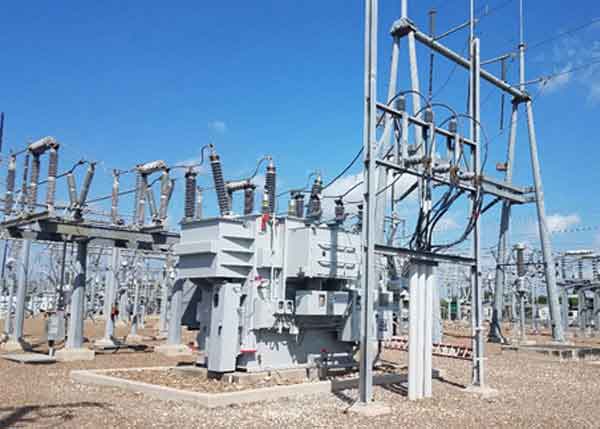
Russia Builds Power Lines to Reactivate Zaporizhzhia Plant
Zaporizhzhia Nuclear Plant Restart signals new high-voltage transmission lines to Mariupol, Rosatom grid integration, and IAEA-monitored safety amid occupied territory risks, cooling system shortfalls after the Kakhovka dam collapse, and disputed international law.
Key Points
A Russian plan to reconnect and possibly restart ZNPP via power lines, despite IAEA safety, cooling, and legal risks.
✅ 80 km high-voltage link toward Mariupol confirmed by imagery
✅ IAEA warns of safety risks and militarization at the site
✅ Cooling capacity limited after Kakhovka dam destruction
Russia is actively constructing new power lines to facilitate the restart of the Zaporizhzhia Nuclear Power Plant (ZNPP), Europe's largest nuclear facility, which it seized from Ukraine in 2022. Satellite imagery analyzed by Greenpeace indicates the construction of approximately 80 kilometers (50 miles) of high-voltage transmission lines and pylons connecting the plant to the Russian-controlled port city of Mariupol. This development marks the first tangible evidence of Russia's plan to reintegrate the plant into its energy infrastructure.
Strategic Importance of Zaporizhzhia Nuclear Power Plant
The ZNPP, located on the eastern bank of the Dnipro River in Enerhodar, was a significant asset in Ukraine's energy sector before its occupation. Prior to the war, the plant was connected to Ukraine's national grid, which later saw resumed electricity exports, via four 750-kilovolt lines, two of which passed through Ukrainian-controlled territory and two through areas under Russian control. The ongoing conflict has damaged these lines, complicating efforts to restore the plant's operations.
In March 2022, Russian forces captured the plant, and by 2023, all six of its reactors had been shut down. Despite this, Russian authorities have expressed intentions to restart the facility. Rosatom, Russia's state nuclear corporation, has identified replacing the power grid as one of the critical steps necessary for resuming operations, even as Ukraine pursues more resilient wind power to bolster its energy mix.
Environmental and Safety Concerns
The construction of new power lines and the potential restart of the ZNPP have raised significant environmental and safety concerns, as the IAEA has warned of nuclear risks from grid attacks in recent assessments. Greenpeace has reported that the plant's cooling system has been compromised due to the destruction of the Kakhovka Reservoir dam in 2023, which previously supplied cooling water to the plant. Currently, the plant relies on wells for cooling, which are insufficient for full-scale operations.
Additionally, the International Atomic Energy Agency (IAEA) has expressed concerns about the militarization of the plant. Reports indicate that Russian forces have established defensive positions and trenches around the facility, with mines found at ZNPP by UN inspectors, raising the risk of accidents and complicating efforts to ensure the plant's safety.
International Reactions and Legal Implications
Ukraine and the international community have condemned Russia's actions as violations of international law and Ukrainian sovereignty. Ukrainian officials have argued that the construction of power lines and the potential restart of the ZNPP constitute illegal activities in occupied territory. The IAEA has called for a ceasefire to allow for necessary safety improvements and to facilitate inspections of the plant, as a possible agreement on power plant attacks could underpin de-escalation efforts.
The United States has also expressed concerns, with President Donald Trump reportedly proposing the inclusion of the ZNPP in peace negotiations, which sparked controversy among Ukrainian and international observers, even suggesting the possibility of transferring control to American companies. However, Russia has rejected such proposals, reaffirming its intention to maintain control over the facility.
The construction of new power lines to the Zaporizhzhia Nuclear Power Plant signifies Russia's commitment to reintegrating the facility into its energy infrastructure. However, this move raises significant environmental, safety, and legal concerns, and a proposal to control Ukraine's nuclear plants remains controversial among stakeholders. The international community continues to monitor the situation closely, urging for adherence to international laws and standards to prevent potential nuclear risks.
Related News
Sign Up for Electricity Forum’s News Service
Weekly updates from our FREE News Service—get the latest news, breakthrough technologies, and expert insights, delivered straight to your inbox.

Ontario’s Electricity Future: Balancing Demand and Emissions
Ontario Electricity Transition faces surging demand, GHG targets, and federal regulations, balancing natural gas, renewables, battery storage, and grid reliability while pursuing net-zero by 2035 and cost-effective decarbonization for industry, EVs, and growing populations.
Key Points
Ontario Electricity Transition is the province's shift to a reliable, low-GHG grid via renewables, storage, and policy.
✅ Demand up 75% by 2050; procurement adds 4,000 MW capacity.
✅ Gas use rises to 25% by 2030, challenging GHG goals.
✅ Tripling wind and solar with storage can cut costs and emissions.
Ontario's electricity sector stands at a pivotal crossroads. Once a leader in clean energy, the province now faces the dual challenge of meeting surging demand while adhering to stringent greenhouse gas (GHG) reduction targets. Recent developments, including the expansion of natural gas infrastructure and proposed federal regulations, have intensified debates about the future of Ontario's energy landscape, as this analysis explains in detail.
Rising Demand and the Need for Expansion
Ontario's electricity demand is projected to increase by 75% by 2050, equivalent to adding four and a half cities the size of Toronto to the grid. This surge is driven by factors such as industrial electrification, population growth, and the transition to electric vehicles. In response, as Ontario confronts a looming shortfall in the coming years, the provincial government has initiated its most ambitious energy procurement plan to date, aiming to secure an additional 4,000 megawatts of capacity by 2030. This includes investments in battery storage and natural gas generation to ensure grid reliability during peak demand periods.
The Role of Natural Gas: A Controversial Bridge
Natural gas has become a cornerstone of Ontario's strategy to meet immediate energy needs. However, this reliance comes with environmental costs. The Independent Electricity System Operator (IESO) projects that by 2030, natural gas will account for 25% of Ontario's electricity supply, up from 4% in 2017. This shift raises concerns about the province's ability to meet its GHG reduction targets and to embrace clean power in practice.
The expansion of gas-fired plants, including broader plans for new gas capacity, such as the Portlands Energy Centre in Toronto, has sparked public outcry. Environmental groups argue that these expansions could undermine local emissions reduction goals and exacerbate health issues related to air quality. For instance, emissions from the Portlands plant have surged from 188,000 tonnes in 2017 to over 600,000 tonnes in 2021, with projections indicating a potential increase to 1.65 million tonnes if the expansion proceeds as planned.
Federal Regulations and Economic Implications
The federal government's proposed clean electricity regulations aim to achieve a net-zero electricity sector by 2035. However, Ontario's government has expressed concerns that these regulations could impose significant financial burdens. An analysis by the IESO suggests that complying with the new rules would require doubling the province's electricity generation capacity, potentially adding $35 billion in costs by 2050, while other estimates suggest that greening Ontario's grid could cost $400 billion over time. This could result in higher residential electricity bills, ranging from $132 to $168 annually starting in 2033.
Pathways to a Sustainable Future
Experts advocate for a diversified approach to decarbonization that balances environmental goals with economic feasibility. Investments in renewable energy sources, such as new wind and solar resources, along with advancements in energy storage technologies, are seen as critical components of a sustainable energy strategy. Additionally, implementing energy efficiency measures and modernizing grid infrastructure can enhance system resilience and reduce emissions.
The Ontario Clean Air Alliance proposes phasing out gas power by 2035 through a combination of tripling wind and solar capacity and investing in energy efficiency and storage solutions. This approach not only aims to reduce emissions but also offers potential cost savings compared to continued reliance on gas-fired generation.
Ontario's journey toward a decarbonized electricity grid is fraught with challenges, including balancing reliability, clean, affordable electricity, and environmental sustainability. While natural gas currently plays a significant role in meeting the province's energy needs, its long-term viability as a bridge fuel remains contentious. The path forward will require careful consideration of technological innovations, regulatory frameworks, and public engagement to ensure a clean, reliable, and economically viable energy future for all Ontarians.
Related News
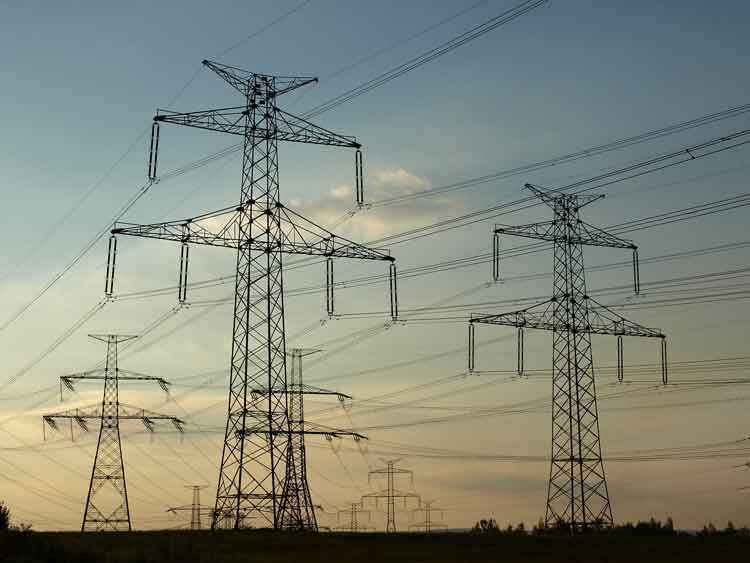
Trump's Proposal to Control Ukraine's Nuclear Plants Sparks Controversy
US Control of Ukraine Nuclear Plants sparks debate over ZNPP, Zaporizhzhia, sovereignty, safety, ownership, and international cooperation, as Washington touts utility expertise, investment, and modernization to protect critical energy infrastructure amid conflict.
Key Points
US management proposal for Ukraine's nuclear assets, notably ZNPP, balancing sovereignty, safety, and investment.
✅ Ukraine retains ownership; any transfer requires parliament approval.
✅ ZNPP safety risks persist amid occupation near active conflict.
✅ International reactions split: sovereignty vs. cooperation and investment.
In a recent phone call with Ukrainian President Volodymyr Zelenskyy, U.S. President Donald Trump proposed that the United States take control of Ukraine's nuclear power plants, including the Zaporizhzhia Nuclear Power Plant (ZNPP), which has been under Russian occupation since early in the war and where Russia is reportedly building power lines to reactivate the plant amid ongoing tensions. Trump suggested that American ownership of these plants could be the best protection for their infrastructure, a proposal that has sparked controversy in policy circles, and that the U.S. could assist in running them with its electricity and utility expertise.
Ukrainian Response
President Zelenskyy promptly addressed Trump's proposal, stating that while the conversation focused on the ZNPP, the issue of ownership was not discussed. He emphasized that all of Ukraine's nuclear power plants belong to the Ukrainian people and that any transfer of ownership would require parliamentary approval . Zelenskyy clarified that while the U.S. could invest in and help modernize the ZNPP, ownership would remain with Ukraine.
Security Concerns
The ZNPP, Europe's largest nuclear facility, has been non-operational since its occupation by Russian forces in 2022. The plant's location near active conflict zones raises significant safety risks that the IAEA has warned of in connection with attacks on Ukraine's power grids, and its future remains uncertain. Ukrainian officials have expressed concerns about potential Russian provocations, such as explosions, especially after UN inspectors reported mines at the Zaporizhzhia plant near key facilities, if and when Ukraine attempts to regain control of the plant.
International Reactions
The proposal has elicited mixed reactions both within Ukraine and internationally. Some Ukrainian officials view it as an opportunistic move by the U.S. to gain control over critical infrastructure, while others see it as a potential avenue for modernization and investment, alongside expanding wind power that is harder to destroy in wartime. The international community remains divided on the issue, with some supporting Ukraine's sovereignty over its nuclear assets and others advocating for a possible agreement on power plant attacks to ensure the plant's safety and future operation.
President Trump's proposal to have the U.S. take control of Ukraine's nuclear power plants has sparked significant controversy. While the U.S. offers expertise and investment, Ukraine maintains that ownership of its nuclear assets is a matter of national sovereignty, even as it has resumed electricity exports to bolster its economy. The situation underscores the complex interplay between security, sovereignty, and international cooperation in conflict zones.
Related News
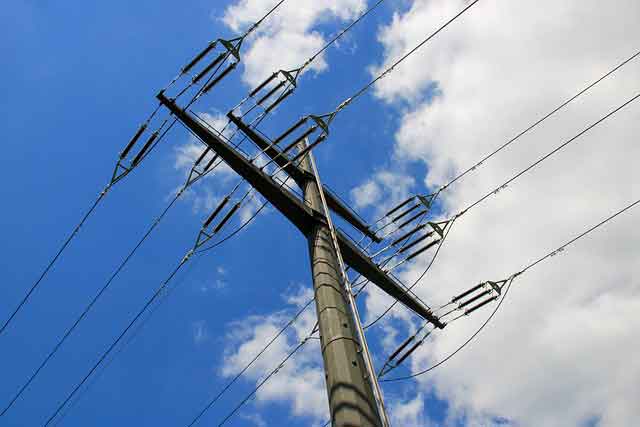
Brenmiller Energy and New York Power Authority Showcase Thermal Storage Success
bGen Thermal Energy Storage stores high-temperature heat in crushed rocks, enabling on-demand steam, hot water, or hot air; integrates renewables, shifts load with off-peak electricity, and decarbonizes campus heating at SUNY Purchase with NYPA.
Key Points
A rock-based TES system storing heat to deliver steam, hot water, or hot air using renewables or off-peak power.
✅ Uses crushed rocks to store high-temperature heat
✅ Cuts about 550 metric tons CO2 annually at SUNY Purchase
✅ Integrates renewables and off-peak electricity with NYPA
Brenmiller Energy Ltd. (NASDAQ: BNRG), in collaboration with the New York Power Authority (NYPA), a utility pursuing grid software modernization to improve reliability, has successfully deployed its first bGen™ thermal energy storage (TES) system in the United States at the State University of New York (SUNY) Purchase College. This milestone project, valued at $2.5 million, underscores the growing role of TES in advancing sustainable energy solutions.
Innovative TES Technology
The bGen™ system utilizes crushed rocks to store high-temperature heat, which can be harnessed to generate steam, hot air, or hot water on demand. This approach allows for the efficient use of excess renewable energy or off-peak electricity, and parallels microreactor storage advances that broaden thermal options, providing a reliable and cost-effective means of meeting heating needs. At SUNY Purchase College, the bGen™ system is designed to supply nearly 100% of the heating requirements for the Physical Education Building.
Environmental Impact
The implementation of the bGen™ system is expected to eliminate approximately 550 metric tons of greenhouse gas emissions annually. This reduction aligns with New York State's ambitious climate goals, including a 40% reduction in greenhouse gas emissions by 2030, even as transmission constraints can limit cross-border imports. The project also demonstrates the potential of TES to support the state's transition to a cleaner and more resilient energy system.
Collaborative Effort
The successful deployment of the bGen™ system at SUNY Purchase College is the result of a collaborative effort between Brenmiller Energy and NYPA. The project was partially funded by a grant from the Israel-U.S. Binational Industrial Research and Development (BIRD) Foundation. This partnership highlights the importance of international cooperation in advancing innovative energy technologies, as seen in OPG-TVA nuclear collaboration efforts across North America.
Future Prospects
The successful installation and operation of the bGen™ system at SUNY Purchase College serve as a model for broader adoption of TES technology in institutional settings, as OPG's SMR commitment signals parallel low-carbon investment across the region. Brenmiller Energy and NYPA plan to share the project's findings through a webinar hosted by the Renewable Thermal Collaborative on May 19, 2025. This initiative aims to promote the scalability and replicability of TES solutions across New York State and beyond.
As the demand for sustainable energy solutions continues to grow, the successful deployment of the bGen™ system at SUNY Purchase College marks a significant step forward in the integration of TES technology into the U.S. energy landscape, while projects like Pickering B refurbishment underscore parallel clean power investments. The project not only demonstrates the feasibility of TES but also sets a precedent for future initiatives aimed at reducing carbon emissions and enhancing energy efficiency.
Brenmiller Energy's commitment to innovation and sustainability positions the company as a key player in the evolving energy sector. With continued support from partners like NYPA and the BIRD Foundation, and as jurisdictions advance first SMR deployments in North America, Brenmiller Energy is poised to expand the reach of its TES solutions, contributing to a more sustainable and resilient energy future.
Related News
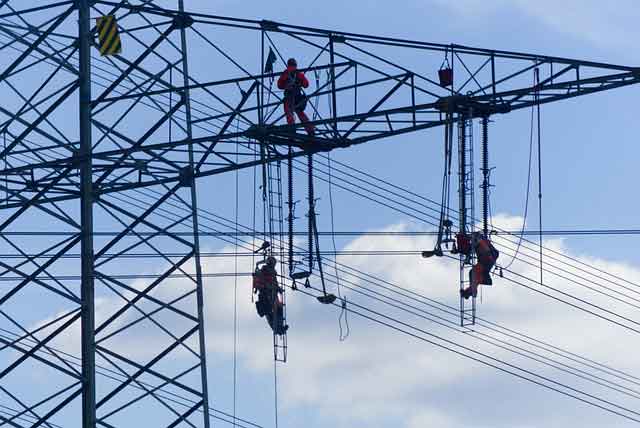
Ontario Breaks Ground on First Small Modular Nuclear Reactor
Ontario SMR BWRX-300 leads Canada in next-gen nuclear energy at Darlington, with GE Vernova and Hitachi, delivering clean, reliable power via modular design, passive safety, scalability, and lower costs for grid integration.
Key Points
Ontario SMR BWRX-300 is a 300 MW modular boiling water reactor at Darlington with passive safety and clean power.
✅ 300 MW BWR supplies power for about 300,000 homes
✅ Passive safety enables safe shutdown without external power
✅ Modular design reduces costs and speeds grid integration
Ontario has initiated the construction of Canada's first small modular nuclear reactor (SMR), supported by OPG's SMR commitment to deployment, marking a significant milestone in the province's energy strategy. This development positions Ontario at the forefront of next-generation nuclear technology within the G7 nations.
The project, known as the Darlington New Nuclear Project, is being led by Ontario Power Generation (OPG) in collaboration with GE Vernova and Hitachi Nuclear Energy, and through its OPG-TVA partnership on new nuclear technology development. The chosen design is the BWRX-300, a 300-megawatt boiling water reactor that is approximately one-tenth the size and complexity of traditional nuclear reactors. The first unit is expected to be operational by 2029, with plans for additional units to follow.
Each BWRX-300 reactor is projected to supply electricity to about 300,000 homes, contributing to Ontario's efforts, which include the decision to refurbish Pickering B for additional baseload capacity, to meet the anticipated 75% increase in electricity demand by 2050. The compact design of the SMR allows for easier integration into existing infrastructure, reducing the need for extensive new transmission lines.
The economic impact of the project is substantial. The construction of four such reactors is expected to create up to 18,000 jobs and contribute approximately $38.5 billion CAD to the Canadian economy, reflecting the economic benefits of nuclear projects over 65 years. The modular nature of SMRs also allows for scalability, with each additional unit potentially reducing costs through economies of scale.
Safety is a paramount consideration in the design of the BWRX-300. The reactor employs passive safety features, meaning it can safely shut down without the need for external power or operator intervention. This design enhances the reactor's resilience to potential emergencies, aligning with stringent regulatory standards.
Ontario's commitment to nuclear energy is further demonstrated by its plans for four SMRs at the Darlington site. This initiative reflects a broader strategy to diversify the province's energy mix, incorporating clean and reliable power sources to complement renewable energy efforts.
While the development of SMRs in Ontario is a significant step forward, it also aligns with the Canadian nuclear initiative positioning Canada as a leader in the global nuclear energy landscape. The successful implementation of the BWRX-300 could serve as a model for other nations exploring advanced nuclear technologies.
Ontario's groundbreaking work on small modular nuclear reactors represents a forward-thinking approach to energy generation. By embracing innovative technologies, the province is not only addressing future energy demands but also, through the Pickering NGS life extension, contributing to the global transition towards sustainable and secure energy solutions.
Related News
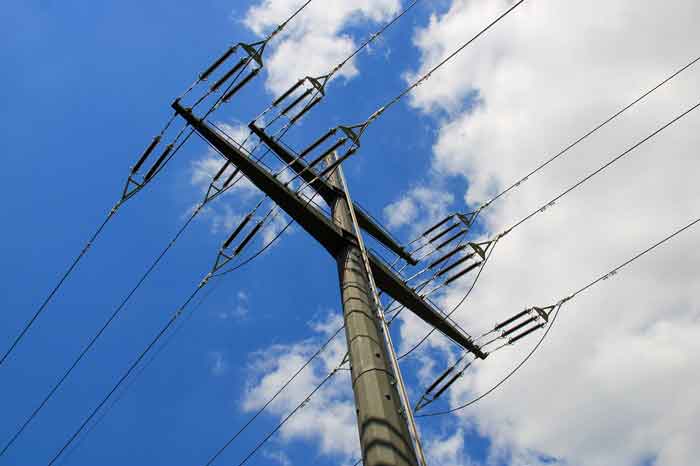
Trump's Proposal on Ukraine's Nuclear Plants Sparks Controversy
Ukraine Nuclear Plant Ownership Proposal outlines U.S. management of Ukrainian reactors amid the Russia-Ukraine war, citing nuclear safety, energy security, and IAEA oversight; Kyiv rejects ownership transfer, especially regarding Zaporizhzhia under Russian control.
Key Points
U.S. control of Ukraine's nuclear plants for safety; Kyiv rejects transfer, citing sovereignty risks at Zaporizhzhia.
✅ U.S. proposal to manage Ukraine's reactors amid war
✅ Kyiv refuses ownership transfer; open to investment
✅ Zaporizhzhia under Russian control raises safety risks
In the midst of the ongoing conflict between Russia and Ukraine, U.S. President Donald Trump has proposed a controversial idea: Ukraine should give its nuclear power plants to the United States for safekeeping and management. This suggestion came during a phone call with Ukrainian President Volodymyr Zelenskyy, wherein Trump expressed the belief that American ownership of these nuclear plants could offer them the best protection amid the ongoing war. But Kyiv, while open to foreign support, has firmly rejected the idea of transferring ownership, especially as the Zaporizhzhia nuclear plant remains under Russian occupation.
Ukraine’s nuclear energy infrastructure has always been a vital component of its power generation. Before the war, the country’s four nuclear plants supplied nearly half of its electricity. As Russia's military forces target Ukraine's energy infrastructure, including power plants and coal mines, international watchdogs like the IAEA have warned of nuclear risks as these nuclear facilities have become crucial to maintaining the nation’s energy stability. The Zaporizhzhia plant, in particular, has attracted international concern due to its size and the ongoing threat of a potential nuclear disaster.
Trump’s Proposal and Ukraine’s Response
Trump’s proposal of U.S. ownership came as a response to the ongoing threats posed by Russia’s occupation of the Zaporizhzhia plant. Trump argued that the U.S., with its expertise in running nuclear power plants, could safeguard these facilities from further damage and potential nuclear accidents. However, Zelenskyy quickly clarified that the discussion was only focused on the Zaporizhzhia plant, which is currently under Russian control. The Ukrainian president emphasized that Kyiv would not entertain the idea of permanently transferring ownership of its nuclear plants, even though they would welcome investment in their restoration and modernization, particularly after the war.
The Zaporizhzhia nuclear plant has been a focal point of geopolitical tensions since Russia's occupation in 2022. Despite being in "cold shutdown" to prevent further risk of explosions, the facility remains a major concern due to its potential to cause a nuclear disaster. Ukrainian officials, along with international observers, have raised alarm about the safety risks posed by the plant, including mines at Zaporizhzhia reported by UN watchdogs, which is situated in a war zone and under the control of Russian forces who are reportedly neglecting proper safety protocols.
The Fear of a Nuclear Provocation
Ukrainians have expressed concerns that Trump’s proposal could embolden Russia to escalate tensions further, even as a potential agreement on power-plant attacks has been discussed by some parties. Some fear that any attempt to reclaim the plant by Ukraine could trigger a Russian provocation, including a deliberate attack on the plant, which would have catastrophic consequences for both Ukraine and the broader region. The analogy is drawn with the destruction of the Nova Kakhovka dam, which Ukraine accuses Russia of sabotaging, an act that severely disrupted water supplies to the Zaporizhzhia plant. Ukrainian military officials, including Ihor Romanenko, a former deputy head of Ukraine’s armed forces, warned that Trump’s suggestion might be an exploitation of Ukraine’s vulnerable position in the ongoing war.
Despite these fears, there are some voices within Ukraine, including former employees of the Zaporizhzhia plant, who believe that a deliberate attack by Russian forces is unlikely. They argue that the Russian military needs the plant in functioning condition for future negotiations, with Russia building new power lines to reactivate the site as part of that calculus, and any damage could reduce its value in such exchanges. However, the possibility of Russian negligence or mismanagement remains a significant risk.
The Strategic Role of Ukraine's Nuclear Plants
Ukraine's nuclear plants were a cornerstone of the country’s energy sector long before the conflict began. In recent years, as Ukraine lost access to coal resources in the Donbas region due to Russian occupation, nuclear power became even more vital, alongside a growing focus on wind power to improve resilience. The country’s reliance on these plants grew as Russia launched a sustained campaign to destroy Ukraine’s energy infrastructure, including attacks on nuclear power stations.
The Zaporizhzhia plant, in particular, holds strategic importance not only due to its size but also because of its location in southeastern Ukraine, an area that has been at the heart of the conflict. Despite being in Russian hands, the plant’s reactors have been safely shut down, reducing the immediate risk of a nuclear explosion. However, the plant’s future remains uncertain, as Russia’s long-term control over it could disrupt Ukraine’s energy security for years to come.
Wider Concerns About Aging Nuclear Infrastructure
Beyond the geopolitical tensions, there are broader concerns about the aging infrastructure of Ukraine's nuclear power plants. International watchdogs, including the environmentalist group Bankwatch, have criticized these facilities as “zombie reactors” due to their outdated designs and safety risks. Experts have called for Ukraine to decommission some of these reactors, fearing that they are increasingly unsafe, especially in the context of a war.
However, Ukrainian officials, including Petro Kotin, head of Energoatom (Ukraine's state-owned nuclear energy company), argue that these reactors are still functional and critical to Ukraine's energy needs. The ongoing conflict, however, complicates efforts to modernize and secure these facilities, which are increasingly vulnerable to both physical damage and potential nuclear hazards.
The Global Implications
Trump's suggestion to take control of Ukraine's nuclear power plants has raised significant concerns on the international stage. Some fear that such a move could set a dangerous precedent for nuclear security and sovereignty. Others see it as an opportunistic proposal that exploits Ukraine's wartime vulnerability.
While the future of Ukraine's nuclear plants remains uncertain, one thing is clear: these facilities are now at the center of a geopolitical struggle that could have far-reaching consequences for the energy security of Europe and the world. The safety of these plants and their role in Ukraine's energy future will remain a critical issue as the war continues and as Ukraine navigates its relations with both the U.S. and Russia, with the grid even having resumed electricity exports at times.
Related News
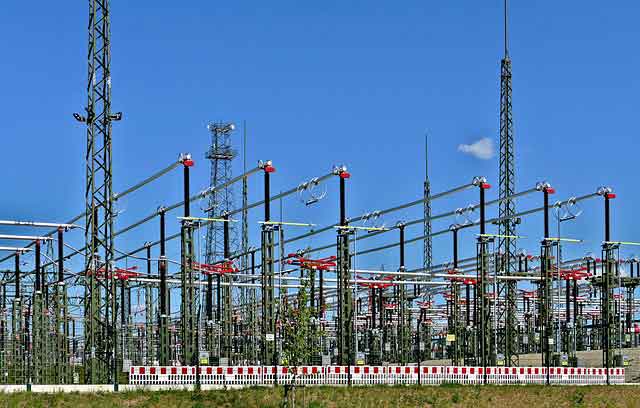
Berlin Geothermal Plant in El Salvador Set to Launch This Year
El Salvador Geothermal Expansion boosts renewable energy with a 7 MW Berlin binary ORC plant, upgrades at Ahuachapan, and pipeline projects, strengthening clean power capacity, grid reliability, and sustainable growth in Central America.
Key Points
A national push adding binary-cycle capacity at Berlin and Ahuachapan, boosting geothermal supply and advancing sites.
✅ 7 MW Berlin binary ORC plant entering service.
✅ Ahuachapan upgrade adds 2 MW, total geothermal 204 MW.
✅ Next: Chinameca, San Miguel, San Vicente, World Bank backed.
El Salvador is set to expand its renewable energy capacity with the inauguration of the 7-MW Berlin binary geothermal power plant, slated to go online later this year. This new addition marks a significant milestone in the country’s geothermal energy development, highlighting its commitment to sustainable energy solutions. The plant, which has already been installed and is currently undergoing testing, is expected to boost the nation’s geothermal capacity, contributing to its growing renewable energy portfolio.
The Role of Geothermal Energy in El Salvador’s Energy Mix
Geothermal energy plays a pivotal role in El Salvador's energy landscape. With the combined output from the Ahuachapan and Berlin geothermal plants, geothermal energy now accounts for about 21% of the country's net electricity supply. This makes geothermal the second-largest source of energy generation in El Salvador, underscoring its importance as a reliable and sustainable energy resource alongside emerging options like advanced nuclear microreactor technologies in the broader low-carbon mix.
In addition to the Berlin plant, El Salvador has made significant improvements to its Ahuachapan geothermal power plant. Recent upgrades have increased its generation capacity by 2 MW, further enhancing the country’s geothermal energy output. Together, the Ahuachapan and Berlin plants bring the total installed geothermal capacity to 204 MW, positioning El Salvador as a regional leader in geothermal energy development.
The Berlin Binary Geothermal Plant: A Technological Milestone
The Berlin binary geothermal power plant is especially noteworthy for several reasons. It is the first geothermal power plant to be constructed in El Salvador since 2007, marking a significant step in the country's ongoing efforts to expand its renewable energy infrastructure while reinforcing attention to risk management in light of Hawaii geothermal safety concerns reported elsewhere. The plant utilizes a binary cycle geothermal system, which is known for its efficiency in extracting energy from lower temperature geothermal resources, making it an ideal solution for regions like Berlin, where geothermal resources are abundant but at lower temperatures.
The plant was built by Turboden, an Italian company specializing in organic Rankine cycle (ORC) technology. The binary cycle system operates by transferring heat from the geothermal fluid to a secondary fluid, which then drives a turbine to generate electricity. This system allows for the efficient use of geothermal resources that might otherwise be too low in temperature for traditional geothermal plants, enabling pairing with thermal storage demonstration solutions to optimize output.
Future Geothermal Developments in El Salvador
El Salvador is not stopping with the Berlin geothermal plant. The country is actively working on other geothermal projects, including those in Chinameca, San Miguel, and San Vicente. These developments are expected to add 50 MW of additional capacity in their first phase, reflecting a broader shift as countries pursue hydrogen-ready power plants to reduce emissions, with a second phase, supported by the World Bank, planned to add another 100 MW.
The Chinameca, San Miguel, and San Vicente projects represent the next wave of geothermal development in El Salvador. When completed, these plants will significantly increase the country’s geothermal capacity, further diversifying its energy mix and reducing reliance on fossil fuels, and will require ongoing grid upgrades, a task complicated elsewhere by Germany grid expansion challenges highlighted in Europe.
International Support and Collaboration
El Salvador’s geothermal development efforts are supported by various international partners, including the World Bank, which has been instrumental in financing the expansion of geothermal projects, as utilities such as SaskPower geothermal plans in Canada explore comparable pathways. This collaboration highlights the global recognition of El Salvador’s potential in geothermal energy and its efforts to position itself as a hub for geothermal energy development in Central America.
Additionally, the country’s expertise in geothermal energy, especially in binary cycle technology, has attracted international attention. El Salvador’s progress in the geothermal sector could serve as a model for other countries in the region that are looking to harness their geothermal resources to reduce energy costs and promote sustainable energy development.
The upcoming launch of the Berlin binary geothermal power plant is a testament to El Salvador’s commitment to sustainable energy. As the country continues to expand its geothermal capacity, it is positioning itself as a leader in renewable energy in the region. The binary cycle technology employed at the Berlin plant not only enhances energy efficiency but also demonstrates El Salvador’s ability to adapt and innovate within the renewable energy sector.
With the continued development of projects in Chinameca, San Miguel, and San Vicente, and ongoing international collaboration, El Salvador’s geothermal energy sector is set to play a crucial role in the country’s energy future. As global demand for clean energy grows, exemplified by U.S. solar capacity additions this year, El Salvador’s investments in geothermal energy are helping to build a more sustainable, resilient, and energy-independent future.
Related News
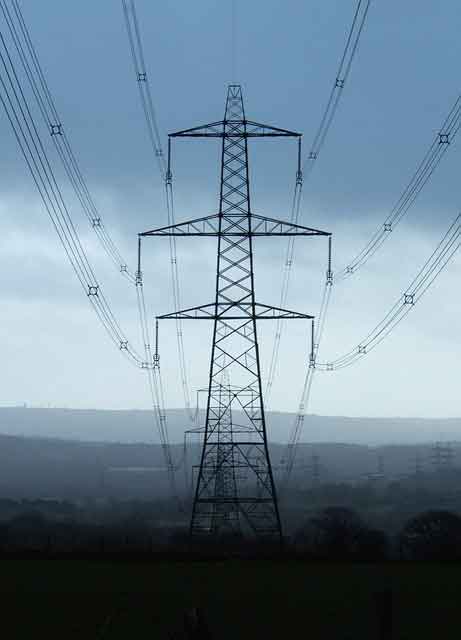
IAEA Warns of Nuclear Risks from Russian Attacks on Ukraine Power Grids
Ukraine nuclear safety risks escalate as IAEA warns of power grid attacks threatening reactor cooling, diesel generators, and Zaporizhzhia oversight, prompting UN calls for demilitarized zones to prevent radioactive releases and accidents.
Key Points
Escalating threats from grid attacks and outages that jeopardize reactor cooling, IAEA oversight, and public safety.
✅ Power grid strikes threaten reactor cooling systems.
✅ Emergency diesel generators are last defense lines.
✅ Calls grow for demilitarized zones around plants.
In early February 2025, Rafael Grossi, Director General of the International Atomic Energy Agency (IAEA), expressed grave concerns regarding the safety of Ukraine's nuclear facilities amid ongoing Russian attacks on the country's power grids, as Kyiv warned of a difficult winter without power after deadly strikes on energy infrastructure. Grossi's warnings highlight the escalating risks to nuclear safety and the potential for catastrophic accidents.
The Threat to Nuclear Safety
Ukraine's nuclear infrastructure, including the Zaporizhzhia Nuclear Power Plant—the largest in Europe—relies heavily on a stable power supply to maintain critical cooling systems and other safety measures. Russian military operations targeting Ukraine's energy infrastructure have led to power outages, and created hazards akin to those highlighted in downed power line safety guidance during emergency repairs, jeopardizing the safe operation of these facilities. Grossi emphasized that such disruptions could result in severe nuclear accidents if cooling systems fail.
IAEA's Response and Actions
In response to these threats, the IAEA has been actively involved in monitoring and assessing the situation. Grossi visited Kyiv to inspect electrical substations and discuss safety measures with Ukrainian officials. He underscored the necessity of ensuring uninterrupted power to nuclear plants and the critical role of emergency diesel generators as a last line of defense, and noted that maintaining staffing continuity, including measures such as staff living on site at critical facilities, may be necessary. The IAEA has also postponed the rotation of its mission at the Zaporizhzhia plant due to security concerns, as reported by Reuters.
International Concerns and Diplomatic Efforts
The international community has expressed deep concern over the potential for nuclear accidents in Ukraine, echoing earlier grid overseer warnings about systemic risks in other crises that stress energy systems. The United Nations and various countries have called for the establishment of a demilitarized zone around nuclear facilities to prevent military activities that could compromise their safety. Diplomatic efforts are ongoing to facilitate dialogue between Russia and Ukraine, aiming to ensure the protection of nuclear sites and the safety of surrounding populations.
The Zaporizhzhia Nuclear Power Plant
The Zaporizhzhia Nuclear Power Plant, located in southeastern Ukraine, has been under Russian control since early in the conflict, with Rosatom cooperation agreements reflecting broader nuclear policy priorities that frame Moscow's approach to the sector. The plant consists of six reactors and has been a focal point of international concern due to its size and the potential consequences of any incident. The IAEA has been working to maintain oversight and ensure the plant's safety amid the ongoing conflict.
Potential Consequences of Nuclear Accidents
A nuclear accident at any of Ukraine's nuclear facilities could have catastrophic consequences, including the release of radioactive materials, displacement of populations, and long-term environmental damage, with communities potentially facing weeks without electricity and basic services in the aftermath. The proximity of these plants to densely populated areas further amplifies the risks. The international community continues to monitor the situation closely, emphasizing the need for immediate action to safeguard nuclear facilities.
The ongoing conflict in Ukraine has introduced unprecedented challenges to nuclear safety. The IAEA's warnings and actions underscore the critical need for international cooperation to protect nuclear facilities from the dangers posed by military activities. Ensuring the safety of these sites is paramount to prevent potential disasters that could have far-reaching humanitarian and environmental impacts, and sustained attention to nuclear workers' safety concerns helps maintain operational readiness under strain.
Related News
EF Partner Media
Related Articles From ET Magazine

Understanding the IEC 61850 Protocol in Substation Automation

Climate Change Fuels Spread of Deadly Fungal Infections in the UK
As global temperatures rise, scientists warn that the UK faces an increasing threat from deadly fungal infections, particularly those caused by the Aspergillus species. These fungi, which can lead to severe respiratory illnesses and brain infections, are projected to expand their range into northern Europe, including the UK, due to climate change.
The Aspergillus Threat
Aspergillus fumigatus and Aspergillus flavus are the primary culprits behind invasive aspergillosis, a life-threatening disease that affects the lungs and can spread to other organs, including the brain. These fungi produce airborne spores that can be inhaled, posing significant risks to individuals with weakened immune systems, such as those undergoing chemotherapy or organ transplants. In the UK, the incidence of aspergillosis is expected to rise as the climate warms, potentially leading to increased hospital admissions and mortality rates.
Climate Change and Fungal Expansion
Research indicates that rising global temperatures are creating more favorable conditions for the proliferation of Aspergillus species. A study led by Norman van Rhijn at the University of Manchester suggests that by 2100, A. fumigatus could expand its range by 77%, potentially exposing an additional 9 million Europeans to infection. Similarly, A. flavus is expected to spread into new regions, including parts of the UK. These projections underscore the urgent need for enhanced surveillance and preparedness to mitigate the impact of these fungal pathogens.
Challenges in Detection and Treatment
Diagnosing fungal infections can be challenging, as symptoms often overlap with other respiratory illnesses. Moreover, antifungal treatments are limited, and resistance is becoming more prevalent. The World Health Organization lists A. fumigatus as one of the most critical fungal pathogens, highlighting the need for improved diagnostic tools and treatment options.
Impact on Agriculture and Food Security
Beyond human health, Aspergillus species pose a significant threat to agriculture. A. flavus produces aflatoxins, potent carcinogens that can contaminate crops such as maize, peanuts, and cotton. Climate change is expected to exacerbate the spread of these toxins, affecting food safety and security. Increased temperatures and humidity levels can enhance the growth of A. flavus, leading to higher aflatoxin contamination in crops.
Urgent Need for Action
Experts emphasize the importance of addressing the dual threats of climate change and fungal infections. Investing in fungal research, improving diagnostic capabilities, and developing effective treatments are critical steps in mitigating the impact of these pathogens. Public health systems must be equipped to recognize and respond to emerging fungal threats, particularly as climate change continues to alter the distribution of infectious diseases.
In conclusion, the spread of deadly fungal infections in the UK, driven by climate change, presents a multifaceted challenge to public health and agriculture. Proactive measures are essential to prevent widespread outbreaks and safeguard the well-being of populations at risk.

Climate Change Impacts and Adaptation Efforts in British Columbia
As of early May 2025, British Columbia is experiencing significant climate-related challenges, including rising temperatures, increased wildfire risks, and ecological disruptions. These developments underscore the urgency for comprehensive adaptation strategies to safeguard communities and ecosystems.
Escalating Wildfire Risks
The province is witnessing an early onset of wildfire season, with 107 active fires reported. Experts attribute the heightened risk to a combination of warmer temperatures and prolonged drought conditions. The BC Wildfire Service has indicated a "high potential for an active spring wildfire season," emphasizing the need for preparedness and swift response measures.
Ecological Disruptions in Urban Forests
In Vancouver's Stanley Park, climate change is manifesting through the proliferation of the western hemlock looper moth, which has led to the death of approximately 160,000 trees. These moths thrive in warmer winters, facilitated by climate change, and have caused significant ecological damage to the park's century-old trees.
Urban Heat and Infrastructure Challenges
Projections indicate that by 2050, Vancouver's climate could resemble that of San Diego, with average summer temperatures rising and increased occurrences of "tropical nights." This shift necessitates urgent adaptations in urban planning and infrastructure to mitigate heat-related health risks and manage water resources effectively.
Strategic Adaptation Initiatives
In response to these challenges, Vancouver has updated its Climate Change Adaptation Strategy, focusing on enhancing resilience against extreme heat, poor air quality, drought, extreme rainfall, and sea level rise. Key initiatives include:
-
Urban Greening: Expanding tree canopy coverage to 30% by 2050 to provide natural cooling and improve air quality.
-
Building Retrofits: Upgrading 30 buildings to enhance cooling and reduce emissions.
-
Green Infrastructure: Implementing green rainwater infrastructure across three hectares of city streets to manage stormwater and mitigate urban heat island effects.
-
Coastal Adaptation: Developing a city-wide coastal adaptation policy to address sea level rise and coastal flooding.
Community Engagement and Equity
The strategy emphasizes equity, recognizing that climate change disproportionately affects vulnerable populations. Each action plan incorporates equity outcomes, ensuring that adaptation measures benefit all residents, particularly those most at risk.
British Columbia's proactive approach to climate adaptation, exemplified by Vancouver's updated strategy, sets a precedent for other regions facing similar challenges. By integrating climate resilience into urban planning and community development, the province aims to safeguard its residents and ecosystems against the escalating impacts of climate change.

Canada Files 200 Fisheries Act Charges Against ArcelorMittal for Alleged Environmental Violations
In a significant enforcement action, Environment and Climate Change Canada (ECCC) has laid 200 charges against ArcelorMittal Canada, alleging violations of the Fisheries Act. The charges pertain to the unlawful deposit of harmful substances into fish-bearing waters in Quebec between 2014 and 2022. These alleged infractions occurred at the Fire Lake Mine and the Mont-Wright mining complex, the latter being the largest open-pit iron mine in Canada. The affected waterways flow into the Moisie River, a provincially administered aquatic reserve and one of North America's major salmon rivers.
Background of the Allegations
The Fisheries Act prohibits the deposit of deleterious substances into waters frequented by fish or in places where such substances may enter these waters. ECCC's enforcement officers initiated investigations into ArcelorMittal Canada's operations at the Fire Lake and Mont-Wright sites after receiving reports of potential environmental violations. The subsequent investigations led to the filing of 200 charges against the company for allegedly permitting or causing the deposit of harmful substances into the aforementioned waterways.
Environmental Significance of the Moisie River
The Moisie River holds ecological importance due to its role as a habitat for Atlantic salmon, a species of significant conservation concern. The river's designation as a provincial aquatic reserve underscores its environmental value and the necessity for stringent protection measures. Alleged contamination of its tributaries could have detrimental effects on local biodiversity and water quality, highlighting the gravity of the charges against ArcelorMittal Canada.
Previous Environmental Infractions
This is not the first instance of ArcelorMittal Canada facing legal action for environmental violations. In 2022, the company and its partner, 7623704 Canada Inc., were fined a total of $15 million for offenses related to the Mont-Wright mining complex. These offenses included unauthorized deposits of toxic substances into fish-bearing waters and the failure to comply with effluent monitoring regulations. The court's decision to impose substantial fines reflects the seriousness with which environmental breaches are treated under Canadian law.
Potential Implications for ArcelorMittal Canada
If convicted, ArcelorMittal Canada could face significant legal and financial repercussions. The Fisheries Act provides for substantial penalties, including fines and orders for remediation. Additionally, a conviction could lead to reputational damage, affecting the company's standing with stakeholders and the public. The ongoing legal proceedings will determine the extent of the company's liability and the appropriateness of any penalties.
Broader Environmental Enforcement Context
The charges against ArcelorMittal Canada underscore the Canadian government's commitment to enforcing environmental protection laws. ECCC's proactive approach in investigating and prosecuting alleged violations serves as a deterrent to other corporations and reinforces the importance of corporate responsibility in environmental stewardship. The outcome of this case may influence future enforcement actions and the development of environmental policies in Canada.
The 200 charges laid against ArcelorMittal Canada highlight the critical need for adherence to environmental regulations in industrial operations. As the legal process unfolds, it serves as a reminder of the importance of safeguarding Canada's natural resources and holding corporations accountable for their environmental impact. The case will likely have lasting implications for environmental governance and corporate accountability in the country.
Electricity Today T&D Magazine Subscribe for FREE

- Timely insights from industry experts
- Practical solutions T&D engineers
- Free access to every issue
EF T&D Live Online Forums
Register for our FREE T&D Live Online Forums and join our live expert-led webinars on the latest electrical industry topics.- Industry expert insights on trending technologies
- Free access to recorded webinar presentations
- Downloadable PDF presentations
- Convenient viewing on your schedule—no attendance required








